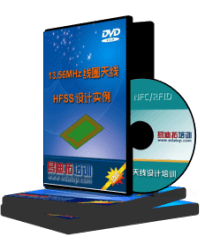天线理论与微带天线, 方大纲

天线理论与微带天线(英文版普通高等教育十五国家级规划教材)
定 价:¥39.00
作 者:方大纲 编
出 版 社:科学出版社
出版时间:2006-1-1
ISBN:9787030163240
内容简介
本书天线基础理论部分从线、面基本辐射单元特性出发,介绍由此组成的离散和连续阵的分析综合。对天线的几个主要参数,系统给出了多种表示法及其相互联系;极化的表示和传输线理论相对应;收发互易由计算接收天线的方向图引入。同时也介绍了数字波束形成和智能天线等近代进展。优化设计部分着重介绍商用软件的有效使用,其中包括空域映射、内插和外推、自适应采样等技术。微带天线部分力求与天线基本理论紧密结合并形成系统,其中包括规则和非规则贴片的设计、方向图计算、阵列设计和有限阵阵中互耦分析、阵列近场诊断。结合介绍高频方法介绍了微带反射阵、Fresnel区板天线和有限尺寸对方向图的影响。分析方法涉及腔模和全波。在全波分析部分深入浅出介绍了谱域方法的精髓。
本书为普通高等教育“十五”国家级规划教材,可作为相关专业本科生和研究生教材,也可作为工程技术人员的参考书。
本书目录
1 Basic Concepts of Antennas
1.1 Introduction
1.2 Radiation Mechanism
1.3 Two Kinds of Elementary Linear Sources and Huygens'Planar Element
1.4 Fundamental Parameters of Antennars
Bibliography
Problems
2 Arrays and Array Synthesis
2.1 Introduction
2.2 N-Element Linear Array:Uniform Amplitude and Spacing
2.3 Phased Array,Grating Lobe and Sub array
2.4 N-Element Linear Array:Uniform Spacing ,Nonuniform Amplitude
2.5 N-Element Linear Array:Uniform Amplitude,Nonuniform
2.6 Signal Processign Antenna Array
2.7 Planar Arrays
2.8 Array Synthesis Through Genetic Algorithm (GA)
Bibliography
Problems
3 Microstrip Patch Antennas
3.1 Introduction
3.2 Cavity Model and Transmission Line Model
3.4 Design Procedure of a Single Rectangular Microstrip Patch Antenna
3.5 Exammple of LTCC Microstrip Patch Antenna
Bibliography
Problems
4 Spectal Domain Approach and Its Application to Microstrip Antennas
4.1 Introduction
4.2 Basic Concept of Spectral Domain Approach
4.3 Some Useful Transform Relations
4.4 Scalarization of Maxwell'sEquations
4.5 Dyadic Green's Function
4.6 Mixed Potential Representations
4.7 Transmission-Line Green's Functions
4.8 Introduction to Complex Integration Techniques
4.9 Full Wave Discrete Image and Full Wave Analysis of Microstrip Antennas
4.10 Asymptotic Integration Techniques and Its Applications
Bibliography
Problems
5 Effective Methods in Using Commercial Softwares for Antenna Design
5.1 Introduction
5.2 Space Mapping Technique
5.3 Extrapolation and Interpolation Methods
5.4 Using Model From Physical Insight to Create Formual
5.5 Using Model From the Artificial Neural Network to Train Formula
5.6 Summary
Bibliography
Problems
6 Design of Conventional and DBF Microstrip Antenna Array
6.1 Introduction
6.2 Feeding Architecture
6.3 Desing of Power Divider and Trannsmission on the Transformer
6.4 Design Examples of Microstrip Antenna Arrays
6.5 Mutral Coupling in Finite Microstrip Antenna Arrays
6.6 Introduction to a Digital Beamforming Receiving Microstrip Antenna Array
Bibliography
Problems
7 High Frequency Methods and Their AppHcatioIlS To Antennas
7.1 IntrodUCtion
7.2 Geometrical Optics
7.3 Physical Optics
7.4 Diffraction by a Conducting Half Plane With Normal Incidence
7.5 Difiraction by a Conducting Half Plane With Arbitrary Incidence
7.6 Applications of Geometrical Theory of Diffraction in Antennas
7.7 Fresnel Diffraction in Three Dimensions
Bibliography
Problems
8 Planar Near-Field Measurement and Array Diagnostics
8.1 IntrOdUCtion
8.2 Fundamental Transformations
8.3 Probe Compensation
8.4 Integral Equation Approach
8.5 Array Diagnostics
Bibliography
Problems
Index









 沪公网安备 31011202014168号
沪公网安备 31011202014168号
 1427313829
1427313829 旺旺在线
旺旺在线 Skype Online
Skype Online 13761612886
13761612886 官方淘宝店
官方淘宝店
